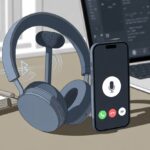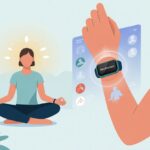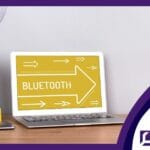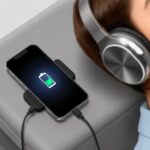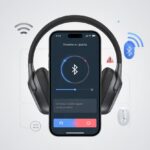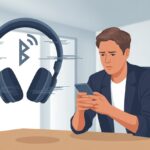We’ve all been there. You put on your fancy Bluetooth headphones, hoping to drown out the world, and then—yep, you hear every barking dog, car horn, and your neighbor’s questionable music taste.
Bluetooth headphones often don’t cancel noise well because of fit issues, weak noise-canceling tech, or just because they’re not designed for total silence. It’s a little like putting a bucket on your head and expecting everything to disappear—sound always finds a way in.
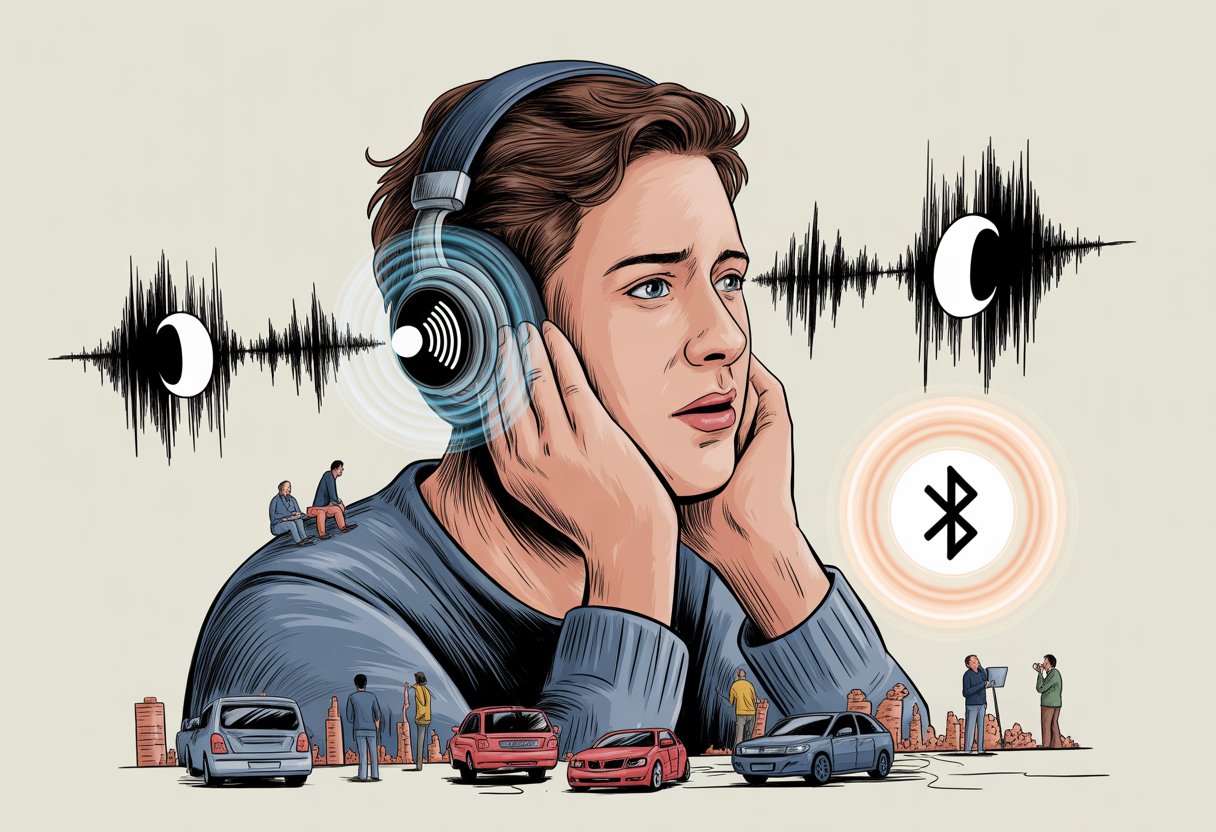
Sometimes, the noise-canceling feature just refuses to work because we didn’t wear them properly, or the earbuds don’t fit right. We should probably check our setup before blaming the tech.
Other times, headphones can only do so much. If the world is just too loud or the space is echoey, noise cancellation gets weaker, like Bose and Sony both point out.
If you’re craving actual peace and quiet, you’ll want to know why your headphones won’t play along—and what you can do about it.
None of us want our favorite podcast ruined by chatty strangers or the world’s loudest lawnmower, right?
How Bluetooth Headphones Cancel Noise (And Why Yours Might Not)
Not every pair of Bluetooth headphones keeps out crying babies or leaf blowers equally. Whether the world gets quiet or stays annoyingly loud depends on the type of noise cancellation—and a few other things that might trip it up.
Understanding Noise Cancellation Technologies
Let’s break it down: there are two main heroes fighting noise in headphones—Active Noise Cancellation (ANC) and Passive Noise Isolation.
Active Noise Cancellation uses microphones to listen to the outside world. The headphones then whip up a special “opposite” sound wave to cancel out the noise.
Thanks to Bluetooth, this whole process runs in the background, and we barely notice it.
Passive Noise Isolation, on the other hand, just relies on good materials—thick ear pads or a tight fit—to block sound. No electronics required, just solid padding doing its job.
Active Noise Cancellation Versus Passive Noise Isolation
Is active always better than passive? Not really!
Both have their perks:
| Type | Strengths | Weaknesses |
|---|---|---|
| Active Noise Cancellation | Great for airplanes, buses, traffic; cancels steady, low rumbles | Struggles with sudden or sharp sounds; uses more battery |
| Passive Noise Isolation | Blocks high-pitched noises; works without power | Less effective for deep rumbles |
Most of us expect ANC headphones to mute everything, but that’s just not how it works. Active tech does best with motors or background hums, while passive isolation keeps chatty coworkers at bay.
Even the fanciest ANC headphones sometimes let in unexpected sounds.
Bluetooth and Its Influence on Noise Canceling
Bluetooth gives us wireless freedom—and sometimes, a few headaches. Bluetooth headphones need more battery to run ANC, so when the battery dips, the noise-canceling magic might drop out.
Bluetooth can add a little delay, but unless you’ve got super-hearing, you probably won’t notice. If your headphones don’t fit well, or you’re wearing glasses, hats, or giant earrings, even the best tech can’t save you. A loose seal just means more sound leaks in.
If ANC isn’t working, check your settings for features like Adaptive Audio. Sometimes, those interfere with regular noise control.
Some headphones let you adjust ANC levels, so a quick settings check could save your sanity on a noisy commute.
Common Reasons Noise Cancellation Fails
There are some real-world reasons Bluetooth headphones don’t always live up to the noise-canceling hype.
Sometimes it comes down to how they fit or what we expect them to do.
Improper Fit: The Comfortable Position Dilemma
Let’s be honest—finding a comfortable fit for headphones can feel like a circus act. If our headphones don’t fit snugly, outside noise just sneaks right in and ruins the noise-canceling effect.
Even the best tech can’t fix a lousy seal.
When you get cozy on the couch or wiggle your headphones around, that perfect fit can just disappear. Loose ear pads or tips let sound leak through.
Over-ear and in-ear headphones each have their own quirks. For in-ear models, using tips that are too small or too big ruins sound isolation and just makes everything worse.
If your headphones feel secure and block your ear canal, noise canceling works better. The moment they slip out of place while you’re moving, that magical silence is gone.
Your comfort and noise canceling go hand-in-hand, so finding a fit that’s both comfy and functional is a must.
Unrealistic Expectations: What Noise Cancellation Can and Can’t Do
Some of us picture noise-canceling headphones as a force field, blocking out every sound from crying babies to barking dogs. In reality, noise cancellation just isn’t that strong.
It works best on steady, low sounds—think airplane engines or air conditioners. Sudden, sharp noises still sneak through, which can be a letdown.
Noise canceling won’t make everything silent. According to folks on Reddit, it mostly lowers the noise, not erases it.
Some background buzz is normal, and music or silence will always have a hint of the outside world.
If we know what noise cancellation can actually do, we’ll enjoy our headphones more. No point blaming them for stuff even superheroes can’t handle.
Types of Noise and Their Impact on Performance
Not every noise is created equal. Some are easy for headphones to hush, while others just slip right past, no matter how expensive your gear is.
It all comes down to how headphones handle different pitches and tones.
Low Frequency Ranges: The Silent Warriors
Put on your Bluetooth headphones, and you might notice the hum of an airplane or an air conditioner just disappears. Those sounds live in the low frequency range—think deep rumbles and steady whirs.
Active noise cancellation (ANC) really shines here. The headphones use microphones to “hear” the incoming noise, then create a sound wave that’s the perfect evil twin—same strength, but flipped upside down.
When those meet, they cancel each other out, and suddenly, the bus ride feels a lot more peaceful.
Here’s a quick comparison:
| Noise Type | Frequency Range | Cancelled by ANC? |
|---|---|---|
| Airplane hum | Low | Yes, pretty well |
| Refrigerator buzz | Low | Yes, usually |
| Distant traffic | Low | Yes, often |
Science really comes through for us with those low frequencies.
Higher Frequencies and Human Voices: The Tricky Customers
Now, let’s talk about the troublemakers: higher frequency noises and, of course, human voices. Unlike rumbles, these include stuff like keyboard clicks, clinking dishes, and people chatting nearby.
ANC starts to stumble here. The tech works best on steady, predictable sounds, but higher frequencies change too quickly for headphones to keep up.
Human voices, with all their weird highs and lows, are especially tough to block.
So, what happens?
- ANC might dull the background hum but leaves chatty coworkers sounding like they’re right next to you.
- Noise isolating headphones (using a physical seal) can muffle speech, but don’t really cancel it out.
If you want more details, check out how different types of noise impact headphone performance. Bottom line: when it comes to blocking voices, our headphones try, but some noises just refuse to go away.
Environments That Challenge Noise Canceling
Some places just refuse to let us enjoy peace and quiet, no matter what headphones we slap on.
These noisy spots have their own ways of sneaking past even the best tech.
Airplanes and Trains: The Great Contenders
Let’s be real—Bluetooth headphones sometimes wave the white flag when they face the rumbling engines of airplanes and trains. The steady drone, especially on planes, is exactly what noise-canceling headphones love to tackle.
They reduce that engine “whoosh” so you don’t have to shout about how blue the sky looks.
But planes and trains don’t stop at one noise. You get random bumps, screeches, announcements, and snack carts rolling by.
Since noise cancellation mainly works on steady hums, all those sudden sounds crash through uncanceled.
That’s why train brakes and that toddler kicking your seat still come through loud and clear.
Here’s a quick rundown:
| Sound Type | Cancelled Well? |
|---|---|
| Engine hum | Usually, yes |
| Speech/Announce | Not very well |
| Sudden bumps | Nope |
The headphones help us survive the long trip, but they’re not magic. Some chaos always sneaks in, no matter what.
If you’re curious, here’s more about how these environments push noise-canceling tech to the limit: noise-cancelling headphone abilities.
Offices and Air-Conditioning: The Everyday Nemeses
We think offices are quiet, until we notice every phone ring, keyboard click, and Steve from accounting coughing across the room.
Noise-canceling headphones work best with steady sounds like the air conditioner’s hum. Goodbye, AC buzz.
But coworkers love to talk, printers love to beep, and those random sounds just breeze right past our headphones’ defenses.
Active noise canceling can’t keep up with conversations or sudden coffee machine noises.
Here’s how some typical office noises stack up:
- Air conditioning: Cancelled pretty well
- Coworker chat or laughter: Not cancelled
- Keyboard clicks and printer beeps: Still there
So, the AC and fridge might fade away, but most of the office circus comes through anyway.
If you want to block everything, you might need a better escape plan—or maybe just work from home. For more on how noise-canceling performs in these places, check out this list of common issues with noise-cancelling headphones.
Features to Boost Your Noise Canceling Experience
Getting Bluetooth headphones to block out noise like a pro doesn’t have to be rocket science. It’s really just about using smart features and a bit of trial and error.
The right settings—like adaptive sound control and proper noise canceling modes—help us dodge background racket and zero in on what we actually want to hear. Sometimes that’s a podcast about cheese, or, I don’t know, questionable karaoke.
Adaptive Sound Control Explained
So, adaptive sound control—let’s break it down. It’s like a tiny butler in your headphones, always listening to your surroundings and adjusting the noise canceling for you.
If you’re out walking on a busy street, it might let in just enough sound so you don’t get flattened by a cyclist. At home, it’ll crank up the noise canceling, and suddenly your neighbor’s jazz flute solo isn’t your problem anymore.
Sometimes, though, adaptive mode gets a little too eager and changes when you least want it. You can usually turn it off in the companion app or device settings.
If things start to sound weird, it’s worth checking if adaptive sound is off. Some brands—like AirPods—even recommend this for the best noise canceling results.
Ambient Sound Control and Noise Canceling Modes
Ambient sound control lets you decide how much of the outside world sneaks in. Handy if you don’t want to miss the pizza guy at the door.
Most headphones give you a few levels to pick from, so you can find what feels right for the moment.
You can also choose a noise canceling mode that fits what you’re doing. Some headphones have presets like “commute,” “office,” or “cafe.”
Others let you fine-tune the amount of cancelation. Not every mode is equal, and honestly, fiddling with them can make a big difference.
If there’s a manual mode, definitely try it. Setting things yourself usually gives you the most control and keeps the headphones from making odd choices—like, why amplify my own chewing?
Troubleshooting Tips For Better Noise Canceling
Sometimes, noise canceling just stops doing its job and lets in way too much sound. Instead of suffering through it, let’s try a few quick fixes.
How to Service Your Product Like a Pro
Before blaming the universe, give your headphones a little spa day. Check that the ear cushions or tips aren’t worn out, loose, or halfway to freedom.
If they look old, swap them for new ones. Well-fitted cushions block noise before the electronics even kick in.
Give your headphones a good cleaning. Wax, dust, and whatever else is lurking in your bag can mess things up.
A soft cloth works wonders. If there’s a firmware update in the app, install it—even if it feels risky. Sometimes it’s just a bug that needs fixing.
Try not to use your headphones right next to hard surfaces like walls. Those can bounce sound back and mess with noise canceling.
Moving to a sofa or a softer spot can honestly make a surprising difference. For more advice, check out this guide on troubleshooting ear cushion issues.
When to Blame Bluetooth, Not the Headphones
Sometimes, it’s not the headphones—it’s the Bluetooth connection acting up. Interference from other wireless gadgets, weak signals, or random drops can mess with noise canceling.
If you’re hearing glitchy sound or random static, try moving closer to your device. Turning off other Bluetooth gadgets nearby can help too.
Unpairing and re-pairing your headphones might feel like overkill, but it actually works more often than you’d think.
Bluetooth versions matter as well—an older phone might not get along with newer headphones. If noise canceling only acts up with certain devices or in certain spots, sometimes just moving, rebooting, or finding a “Bluetooth sweet spot” in your house does the trick.
For more info, check out these tips on weak noise canceling performance due to fit and Bluetooth issues.
When Websites, Cookies, and Site Traffic Distract From Real Noise Canceling
Honestly, sometimes the loudest noise is right on our screens. Instead of chill music, we get bombarded by pop-ups, banners, cookie warnings, and analytics requests.
Cookie Use and Improve User Experience
Cookies are everywhere online, and unfortunately, not the chocolate chip kind. Every website wants to drop a bit of data on your device “to improve your experience.”
Sometimes, it actually helps—like saving passwords or keeping your language settings. Other times, you start to wonder if you’ve signed up for a tracking marathon.
Usually, when you visit a new site, a cookie notification jumps out before you even know what the site’s about. Here’s what these cookies usually claim to do:
- Remember your settings
- Personalize ads (because who doesn’t need more ads?)
- Track what you look at and click, and maybe even what you had for breakfast
Still, these cookies can’t mute the guy mowing his lawn outside while you’re trying to enjoy your “noise-cancelling” headphones. If only our headphones could cancel cookie pop-ups—now that would be real peace.
Analyze Site Traffic Without Losing Your Mind
It’s definitely more than just cookies. Websites seem obsessed with analyzing site traffic, don’t they?
We all notice it—the constant barrage of pop-up surveys and those relentless requests to track our usage. Apparently, every scroll and click turns into precious data gold for site owners.
Honestly, having a bunch of trackers running in the background doesn’t help anyone focus on music or block out the world. If anything, it’s just more noise.
If you tried to map out all the apps and trackers firing up when you open a site, it might look a bit like this:
| Tracker Type | What It Does | Impact on Us |
|---|---|---|
| Ad Tracker | Targets ads | More shoes we’ll never buy |
| Traffic Analyzer | Counts our visits | Slower websites, more loading time |
| Cookie Reminder | Makes us click “Accept All” | Distracts us from real-life noises |
Let’s be real: analyzing site traffic isn’t going to silence a noisy roommate or stop the neighbor’s dog from barking. Sometimes it just adds a new kind of chaos right on our screens.
- How to use Bluetooth headphones with a smartwatch: Because Wires Are So Last Century - October 30, 2025
- Why do my Bluetooth headphones not cancel noise? Common Culprits Behind Your Noisy Headphones - October 29, 2025
- How to use a smartwatch for contactless payments and leave your wallet in the Stone Age - October 29, 2025

